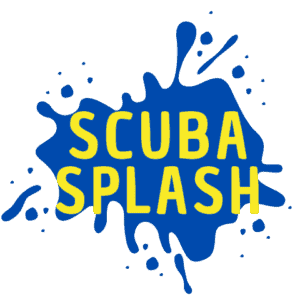Australian waters are a bonified treasure trove of shipwrecks. There are over 8,000 documented wrecks including some that date back to the late 1880s. With such a wide array of shipwrecks in both shallow and deep water, there is something for every diver. There are divable wrecks in every region of the country but the two most famous are the SS Yongala and the SS Nord.
All shipwrecks in Australian waters that are older than 75 years are protected by law and considered underwater museums. It is vital that divers respect the ships and not do any damage to them. This included unintentional damage like removing objects, holding onto fragile structures or attaching lines directly to the ships.
The dive sites are organized by state to make it easier to locate a particular region.
Queensland
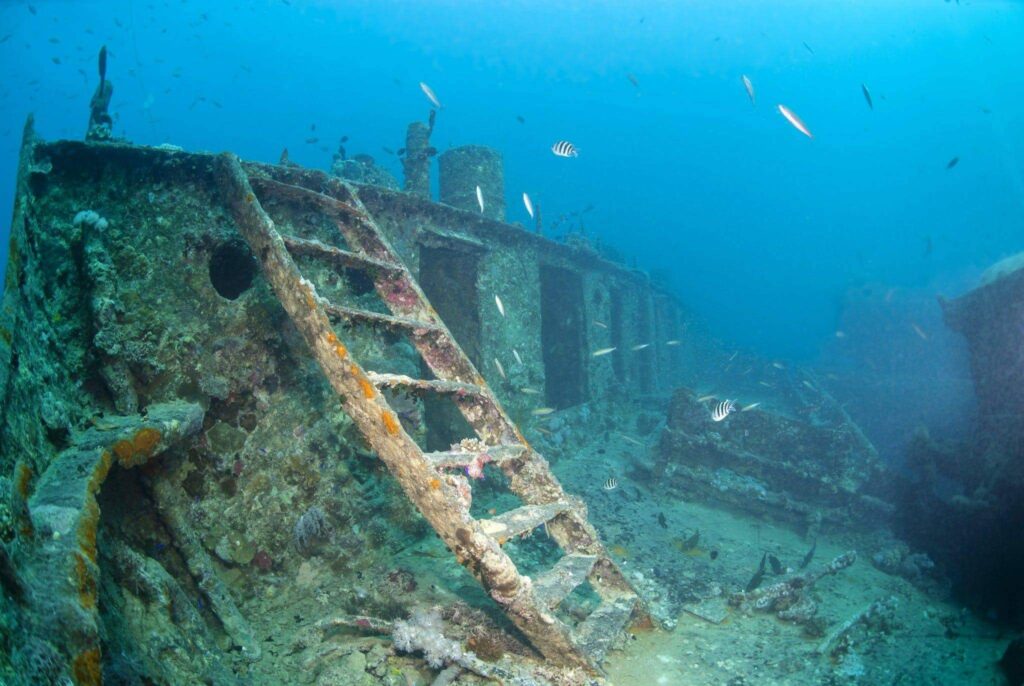
SS Yongala
Townsville, Queensland
The SS Yongala is by far the main attraction when wreck diving in Australia. It is a top wreck dive in the world and the best wreck site in Australia. The Yongala attracts over 10,000 divers every year with no sign of slowing.
The SS Yongala sank on March 23rd, 1911 during a cyclone. There were 122 people on board with no survivors. The steel passenger freight steamer wasn’t discovered until 1958. The Yongala lays 98 feet (30 m) below the surface and is only open to advanced level divers. Apart from viewing the ship, divers will see lots of turtles, triggerfish, grouper, octopus, nurse sharks, and soft coral. Strong currents and rough waters are common at the SS Yongala site.
Lady Bowen
Mission Beach, Queensland
On August 19, 1894, this four-mast schooner sank off the coast of Dunk Island. Lady Bowen was on the way to Sydney when strong currents dragged it ran into Kennedy Shoal. The crew jumped into lifeboats and made it safely to shore. The vessel is 228 feet (69m) long and lies 112 feet (34 m) below the surface.
The vessel has become an artificial reef and is coated in hard and soft coral. Divers can expect to see an array of sea life including sea sponges, sea cucumbers, shellfish, lionfish, snapper, and cod. The deep depths of this site make it open to advanced and experienced divers. Strong currents and high swells are common so trips should only be made when sea conditions are good. Expect the boat ride to take about 60 minutes.

HMAS Brisbane
Mooloolaba, Queensland
This former Royal Australian Navy missile destroyer was intentionally sunk in 2005. It created an artificial reef to support marine life and attract divers. In fact, the ex-HMAS is the largest diveable wreck in all of Queensland at 437 feet (m) long. Divers can enter the engine room, boiler room, and crew quarters.
Divers will delight in the high populations of yellow tail kingfish, jewfish, red emperor, octopus, and anemones. Along with the abundance of fish species there over 300 different types of hard and soft coral.
Northern territory
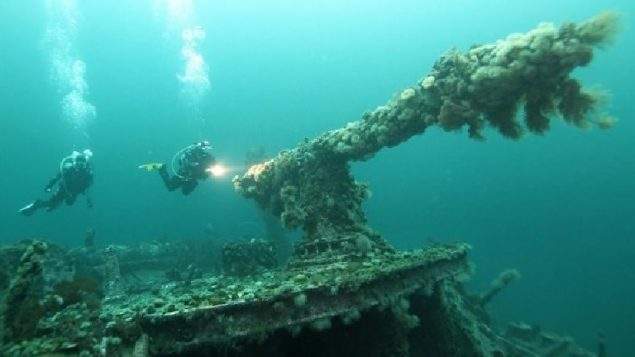
USAT Meigs
Darwin, Northern Territory
February 19, 1942, the first Japanese air strike sunk the USAT Meigs. It was a 430 foot (141 m) USA transport ship and lies off the coast of Darwin. At the time, the Meigs was the largest vessel in Darwin Harbour and made for an easy target. There were 66 crew members aboard and all but 2 survived. It lays 85 feet (26 m) below the surface. There are at least 90 shipwrecks off the coast of Darwin but the USAT Meigs is considered the best one to visit.
The upper hull and upper decks were sold and salvaged in 1959. However, the remains of the ship including the cargo of the Meigs are at the bottom of the ocean including trucks and gun carriers. Divers are also sure to see several different fish including barracuda, cod, snapper, and angelfish. There is a lot of tidal movement at this site along with strong currents. It should only be visited near neap tides.
Western Australia
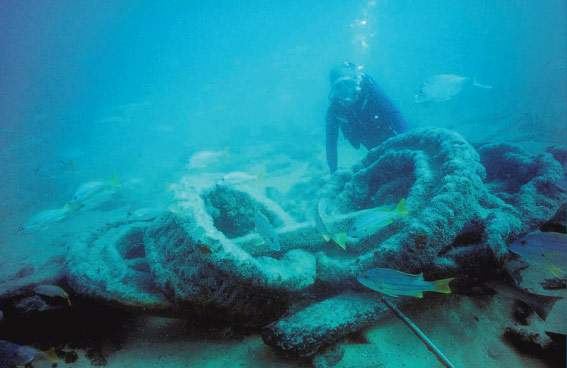
Gundrun
Rockingham, Western Australia
The Gundrun is a three-mast sailing vessel (barque) that was built in Quebec in 1880. The ship arrived in Western Australia in 1901 to collect a load of local timber. On August 4th, 1901 loaded with 3,000 pounds of timber Gundrun left Bunbury for England. The ship’s carpenter intentionally sank the ship by drilling a hole in the hull. After attempts to repair the ship failed Gundrun beached on the flats of Shark Bay. It was abandoned on December 20, 1901, after gale winds smashed the rudder. The vessel wasn’t discovered until 1989 by a Canadian studying dugongs in Shark Bay.
The Gundrun holds the Western Australia title as being the largest intact wooden wreck in the state. The vessel lays just 20 feet (6 m) below the surface and is open to beginner divers. There are lots of marine life in the area including giant grouper, turtles, stingrays, cod, and sweetlips.
This site does have strong currents and should only be explored during certain times because of this. It’s recommended that beginners go with either a divemaster or someone more experienced.
SS Orizaba
Rockingham, Western Australia
The SS Orizaba is a 459 foot (140 m) ocean liner that was used as a royal mail ship and sank after running into shallow water. The vessel got caught in smog from a bushfire and the caused the captain to underestimate where the coastline was. There were 160 people on board and everyone survived. The vessel sank on February 17, 1905, and lays just 23 feet (7 m) under the water.
Today, the SS Orizaba is ranked one of the top ten shipwreck dives in Australia. It is accessible to beginners since the vessel lays in relatively shallow waters. Divers can expect to see coral as well as an array of fish frequenting the area.
South Australia
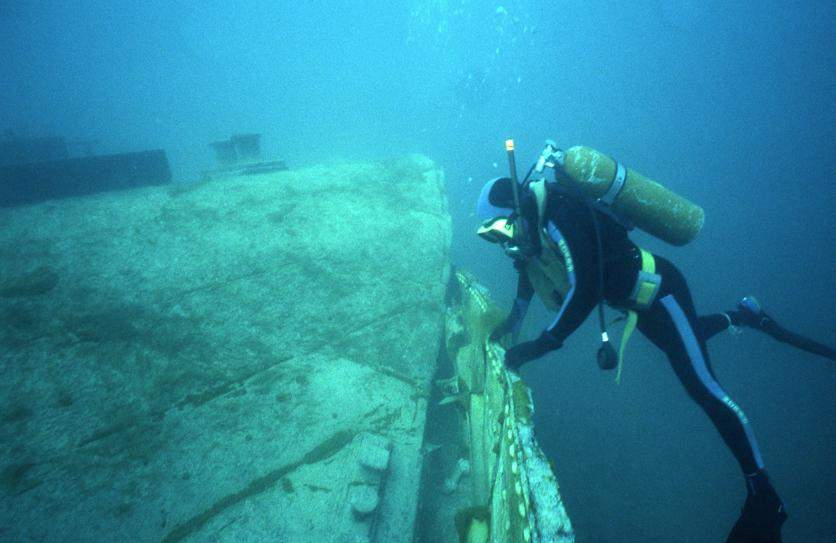
Zanoni
Adelaide, South Australia
In 1867 the 139 feet (42m) long Zanoni was traveling from Port Adelaide to Port Wakefield when it got caught in a cyclone and sank after being violently tossed from side to side. All 16 crew aboard were rescued and questioned if the onboard load of wheat was properly distributed. The vessel laid 59 feet (18 m) below the surface and wasn’t discovered until 1983. With a reward up for grabs, search crews attempted to locate the ship for several months. It wasn’t until April 17th, 1983 that divers discovered the sunken Zanoni.
Zanoni is in fantastic condition with a large portion of it still intact. It’s actually the most intact 19th-century sailing vessel in South Australia. Along with the Zanoni, there are several other wrecks off the coast of Adelaide that are part of the Underwater Heritage Trail. A 1,800 foot (550 m) zone around the Heritage Trail protects the ships and prevents boats or fishermen from entering the area.
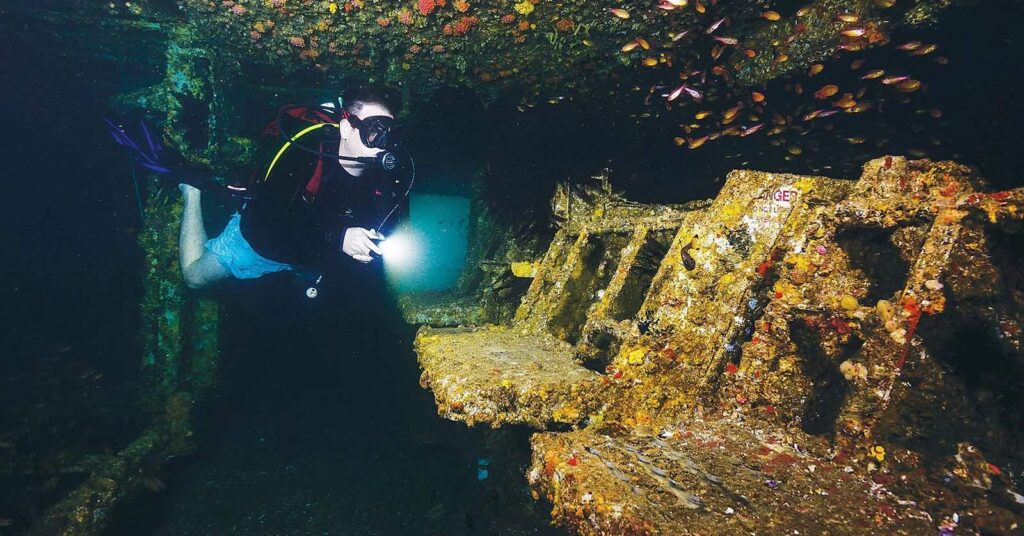
Glenelg Dredge
Glenelg, South Australia
The Dredge was intentionally sunk in 1983 after 70 years of working around Port Adelaide. The vessel lays 49-69 feet (15-21 m) beneath the surface. This 137 foot (42 m) dredger was sunk to create an artificial reef and to also attract divers to the area. It is accompanied by another intentionally sunk vessel, the Glenelg Barge. The vessels are permeable which means you can easily swim through them for great photo opportunities. One such area is the suction tunnel of the dredger.
Though the waters are too cold for coral to grow, divers will see lots of sea sponges as well as an abundance of marine life including massive cuttlefish, boarfish, leatherjackets, and pike. The Dredge is in shallow waters making it accessible to open-water certified divers and is comfortable enough for beginners.
New South Wales
Lady Darling
New South Wales
On November 10, 1881, the Lady Darling hit a rock and sunk off the coast of Montague Island. The iron steamer was transporting coal from Newcastle to Melbourne. Everyone aboard survived but the 190 foot (58 m) cargo steamship was left undiscovered until 1996. A fisherman accidentally discovered the wreck when a net got caught on the vessel. It lays 98 feet (30 m) below the surface and is a site for advanced divers.
There is an abundance of marine life here including sea sponges, coral, anemones, and lots of tropical fish. With the flourishing life and great condition, the Lady Darling is considered one of the better dive sites in the state.
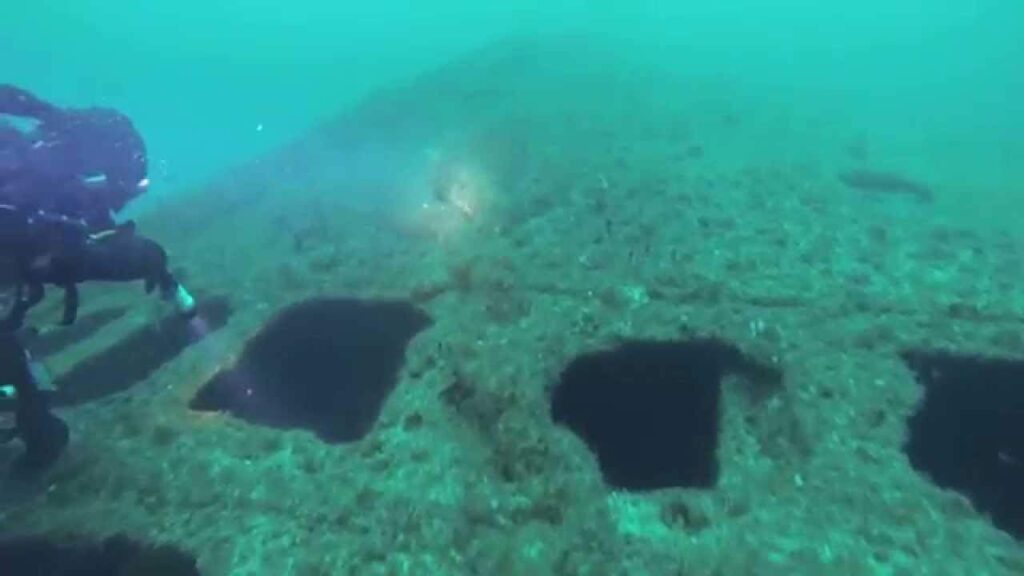
SS Sartara
Seal Rocks, New South Wales
This (130 m) ship sank on April 20, 1910, when it hit a reef off the coast of Seal Rocks. It lays 115-144 feet (35-44 m) below the surface and wasn’t discovered until 1984. Expect to see grey nurse sharks and black cod as they frequent the area. There is a stunning amount of brightly colored coral formations at the Sartara.
The weck is so large that it requires two full dives to completely explore. The bow is completely intact and there are many interesting artifacts here to search for. With the strong currents and deep depths, the SS Sartara is reserved for experienced and technical divers only.
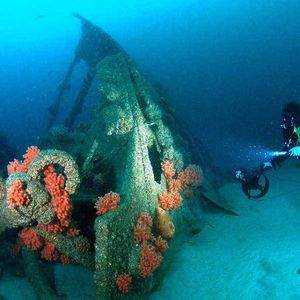
SS Catterthun
Seal Rocks, New South Wales
The twin-screw steamer was a prominent cargo ship between Australian and Chinese trade during the late 1880s. On August 7th, 1895 the ship left Sydney making its journey back to China. The ship was carrying mail, assorted cargo, horses, passengers, 8,915 British sovereign coins. The second officer onboard changed the ship’s course without consulting the captain. This resulted in the Catterthun running full speed into a reef off Little Seal Rock. As the captain attempted to beach the ship a wave swept him along with the second officer out to sea. Through the chaos, only one lifeboat was successfully launched with 26 people on board. All other passengers died in the wreck.
As you can imagine the lure of all the gold on board was in high interest of many people. Insurance companies scrambled to try to recover as much as possible. There were numerous salvage attempts that finally ended on August 20th, 1896. Seven out of ten boxes were recovered totaling 7,900 coins out of the 8,915 on board. To this date there has never been any public record of more coins found.
The SS Catterthun lays just 1.8 miles (3 km) off the coast of Seal Rocks. It is magnificently covered in red sea sponges and black coral. The site contains a lot of artifacts that are only for observing. The site is protected by law so touching or taking any of the artifacts is prohibited. Plus, as divers we want everyone to have to opportunity to view such historic pieces.
The waters are rough and there is a strong current at the site. Make sure to maintain a firm grip on the anchor line during the safety stop. Dive trips to the site are often canceled due to bad weather and water conditions so be prepared to wait for the perfect day.
Victoria

Loch Ard
Port Campbell, Victoria
During a cargo trip between Liverpool and Melbourne, this three-masted iron-clipper crashed into an island. The weather suddenly turned bad and all but 2 passengers aboard died. Loch Ard was carrying a crew of 37, 17 passengers along with assorted cargo. The ship sank on June 1st, 1878, and lays 33-82 feet (10-25 m) below the surface. It was a tragic event because the masts came crashing down and killed some people on board. It also prevented lifeboats from being able to be deployed. It only took 10-15 minutes for the ship to sink after running aground.
The weather here is often unpredictable and the currents are always strong. For these reasons only advanced to experienced divers should explore the Loch Ard from March-May.
Tasmania
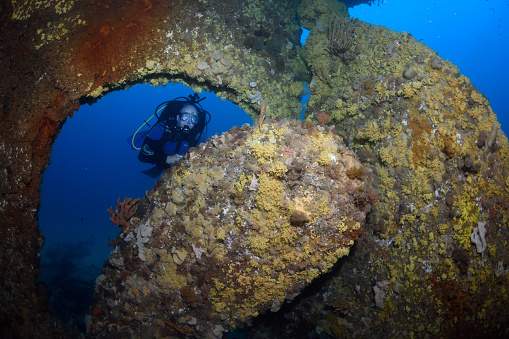
SS Nord
Eaglehawk Neck, Tasmania
The SS Nord is ranked Australia’s second-best wreck dive following the SS Yongala. This 289 foot (88 m) cargo steamer hit a pinnacle (Little Rock) and sunk on November 8, 1915. The very same pinnacle sank a previous ship, the SS Tasman, in 1883. The Nord was carrying 12,00 cases of benzine when it sank. Luckily, everyone on board survived. The vessel lays 138 feet (42 m) below the surface in cold, very strong current waters.
Though parts of the ship have collapsed, the bow and stern are still intact. Artifacts such as brass fittings and Chinese crockery are scattered around. Enjoy them with your eyes as these items are prohibited from being taken or touched. Divers can expect to see an array of marine life along with thriving coral formations. With the water conditions and deep depths, this wreck is only accessible to advanced divers.
